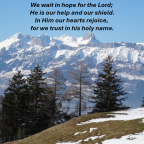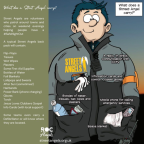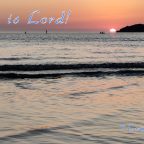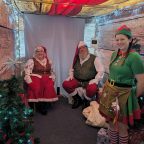Robert Lloyd and the early members were fired by the ideals of the Churches of Christ, a reform movement which originated in Scotland early in the 19th Century and spread to England, and more extensively to America. They were not simply opposed to what they saw as the clericalism, ritualism and state connection of the Church of England. They wanted to return to the teaching and practise of Christ and his Apostles as seen in the New Testament. They practised the baptism of believers by immersion, and the weekly remembrance of their Lord in the ‘breaking of bread’. They stressed the priesthood of all believers, which meant the right and duty of every member to share in the public life and witness of the local church.
The ministry of the church over the years reflects this concern. Leadership was provided by Elders, Deacons and Deaconesses, who were ordained after being elected by the congregation. In 1954, for instance, Mr. A. Forrest and Mr. A. W. Scott came from their London Churches and conducted an ordination service at which ‘Bros. W. Probert, J. H. Tucker and E. F. Lloyd were ordained Elders; Bros. E. Turner, J. Hargreaves and D. Whittingstall were ordained Deacons; and Sisters Amy Tucker— K. Turner and E. Batt were ordained Deaconesses’.
Within this, there was also a natural succession at work, in the three generations of the Lloyd family, Robert, John and Ernest, who between them cover the whole life-span of the church. All three worked in Brookwood hospital, the first two as head gardeners, from 1867 – 1927; the last working his way up to become Group Secretary in 1958. All three gave leadership in the church, which was still continued right into the 1980s with Mr. E. F. Lloyd serving as church treasurer.
The life of the church was centred upon the Sunday services; morning Communion led by the Elders, after-noon Sunday School, and an evening Gospel service. At times Communion also followed the evening service for those unable to make the morning. Life was spartan in many ways. No musical instrument was allowed for many years except for a tuning fork. When change did come it took the form of a grand piano given by Mr. Cawdron and used for the Sunday School anniversary in 1928. From 1931 a harmonium brought the music into the modern era! The water in the baptistry was unheated until recent times. The pool was difficult to fill and even more difficult to empty. There was little concession to time, and the proposal as early as 1903 to purchase and install a clock was judged to be ‘inopportune’!
The warmth of the fellowship was however un-mistakable. The Sunday School flourished from the start and attracted children from many families. The annual outings stay in the memory; first by horse and cart to fields in Bisley, then for many years by open-top bus to Hampton Court, and later still by charabanc to Bognor. There was a close connection with the wider fellowship of the Churches of Christ, through its Birmingham headquarters, and especially with the London Association of Churches. The church was served over many years by preachers from this Association. The notable connection of the Black family was maintained in this way. Robert Black came to preach and to cherish his friendship with Robert Lloyd in the latter part of the 19th century. His son, Robert Wilson Black followed, and he in turn by Sir Cyril Black, who still remembers the journey, as a young man, to Brookwood by train; the walk up to the High Street, and the return journey in the late evening. More recent service has been given by such friends as G. Fletcher, A. Forrest, W. Harrop, T. Ormandy and C. W. V. Robinson.
The church was served by a succession of Evangelists, supported by the central Council of the Churches of Christ, but working in local congregations for periods of a month or more. R. K. Francis came as one of the first in 1889, and began a life-long relationship, which included a period of residence in Knaphill. There was regular giving out of limited income to other new causes, and to missionary work, with special interest in India and Malawi.
The building has stood the test of time well, and has gradually been updated to meet changing times. The changes include: from oil lamps to neon lighting; from greenhouse boiler to gas-fired central heating; from hard wooden forms to modern stacking chairs! Much of the change has been achieved by the skilled hands and unflagging energy of Mr. A. Turner, but with many other helping hands as well.






